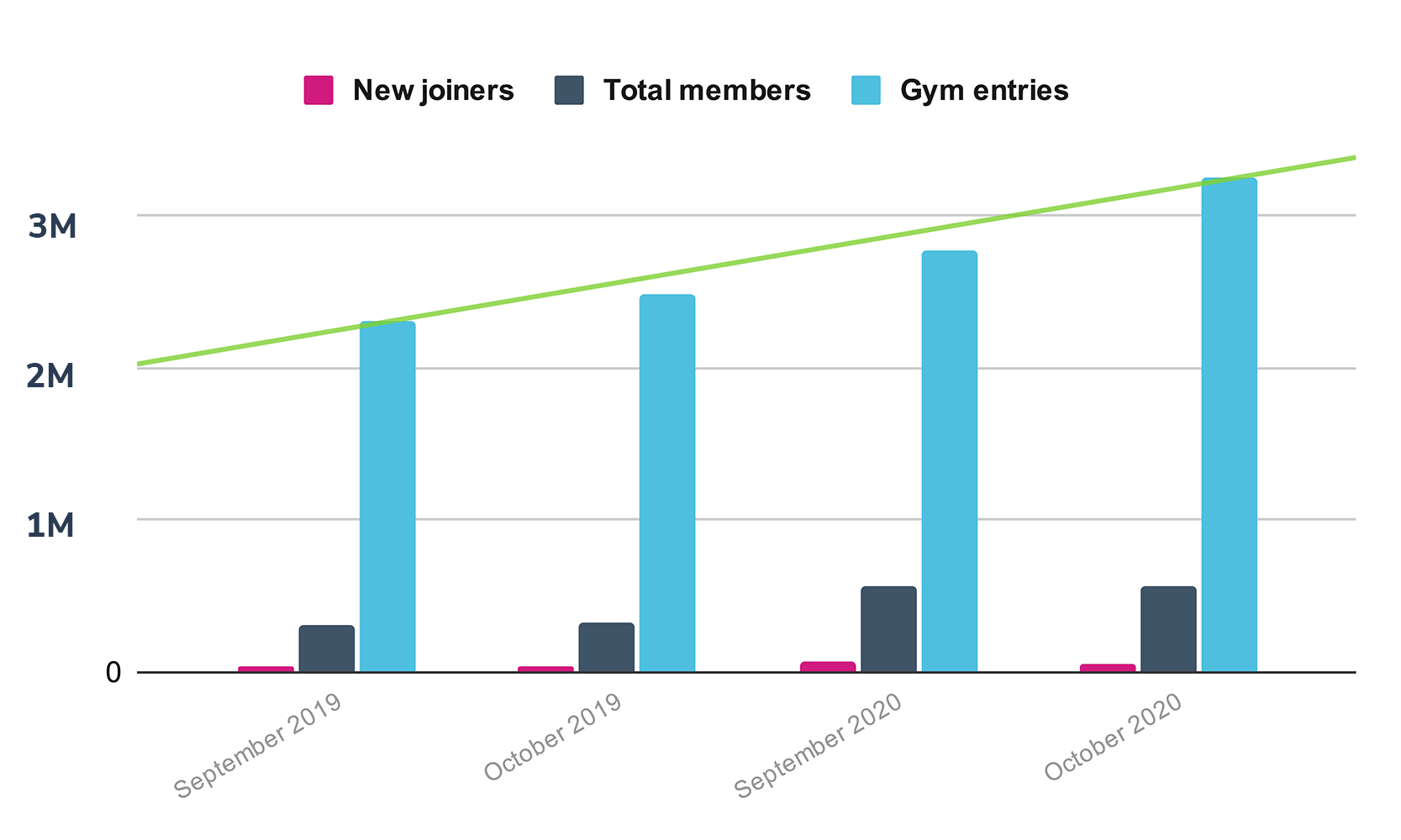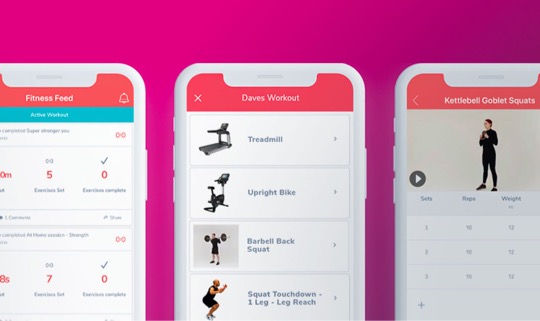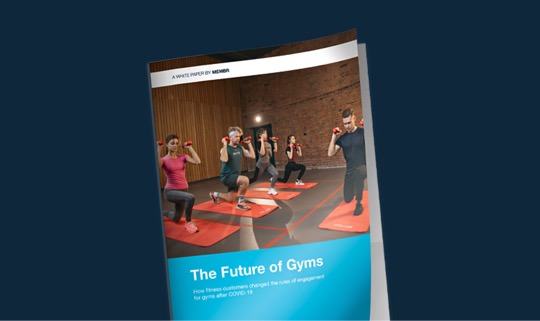Never before has the word ‘unprecedented’ been used as much as during the big COVID-19 pandemic. The fitness industry, among many other industries, was brutally forced to close its doors overnight, which affected both fitness professionals and exercisers.
We should note here that despite all the uncertainty and closures, people everywhere remained committed to exercising, moving and engaging with others (even if they had to do it remotely).
What happened to fitness clubs after the pandemic?
Throughout the first lockdown there was a sense of fear of the unknown. Many operators didn’t know how to access government support and feared that consumer confidence would vanish after reopening. This, in turn, led to some amazing digital concepts being created overnight as operators looked for innovative ways to engage with their members.
What we consequently saw in the autumn in the UK showed us that the efforts were not in vain. Not only did gym members return to the gym floor, but we also recorded a 17% increase in gym visits in October (compared to data recorded in 2019).

Although there is no arguing that the pandemic has brought a meteoric rise in digital fitness businesses globally, and even some of the world’s largest companies entered our industry for the first time, this has not come out of the blue and should not be a surprise to operators that we are now sharing some of the value of our members with companies such as Apple and Peloton.
The need for consumers to pivot to different ways of exercising during the lockdowns simply accelerated the trajectory that we were already on.
We live in a world where consumers have the luxury of choice as to how, where and on what to spend their disposable income and their valuable time. To think that we can continue to simply provide average service with limited options to today’s consumers and still have a viable business is nothing short of naive. The demise of the mid-market in the UK is just one obvious example.
What’s the impact on our customers?
We need to be able to offer choice to customers: choice of how, when and where to exercise and consume our offerings. What better – or easier – way to do this than by introducing digital offerings that are already in the market and aimed at helping operators solve exactly this problem.
There are, of course, many other ways that this can (and should) be done that are not digitally focused. Just take a look at our current personal training business model. A starting point would be ensuring that our personal training model allows higher than just the industry average penetration rate of 4% by broadening the business model with small and large group offerings.
The rise of the ‘box in a box’ concept as part of some very specific boutique offerings being deployed inside big box facilities is a great way of giving choice.
We can no longer ignore the fact that the pandemic has exposed our current members and prospects to digital. What you should really be doing now is looking at how to capitalise on this within your own business model.
I was listening recently to a podcast with Ray Algar who explained perfectly that we should look at heath and fitness as an economy, not an industry. As soon as you frame it like that, the acceleration of digital feels much more like an opportunity than a threat.
So what has changed forever and how can we ensure that we position our businesses to capitalise on this opportunity?
Change in financial solutions: For better or worse, there has been a tremendous change in individuals’ financial situation during the pandemic. Unfortunately, we are seeing huge unemployment levels right now in certain demographics, but with the lack of travel and changes to working conditions, there is an increase in disposable income for others.
Some of the world’s biggest companies have entered our industry: With everyone’s increased attention on health and fitness throughout the pandemic, we are likely to see more tech giants investing in the leisure industry during the recovery phase and beyond.
Consumers expectations have fundamentally changed: Digital products within the ‘bricks and mortar’ part of the fitness industry would have previously been compared to each other. They now have the much more difficult challenge of being compared to successful consumer-focused digital brands, such as Peloton.
Commuter patterns have changed: The days of going to the office 5 days per week for many of us are now a thing of the past. As we move to a more normalised state, it is likely that many businesses will continue to adopt a combination of home working and office attendance, meaning exercise habits will have to change accordingly.
Niche products focusing on global participation: Gyms traditionally focus on delivering a broad service to a specific part of the population by offering a range of fitness services, such as gym floor workouts, exercise classes and personal training and targeting the population within a 10 minute drive time. This couldn’t be more different to digital solutions which have a very specific product targeted at a very specific profile, yet designed for global participation. Going forward we need to look at how we can combine the benefits of both of these business models.
What's next for the fitness industry?
As we look forward, there should be a huge sense of positivity: never have more people been exposed to health and fitness, and never has there been so much innovation in our industry.
What this means is that this acceleration in fitness technology production will be quickly followed by levels of investment that has not been seen before and this, too, will come with winners and losers.
This is far from an exhausted list but here are a couple of ways you can start to think about how to leverage this change for the good and take advantage of the huge opportunity that we will now see.
- Add value to the customer journey.
All the tech that you use within the gym should add value to the customer journey and be fully embedded into it.
Simply advertising that you have an app is going to add zero value to your customer base and ultimately your brand.
In other words, you must ensure that the digital journey and traditional customer journey start to blend in together and complement each other. This may seem like an overly simplistic point, but you would be surprised at how many times we see these being planned separately.
Set the outcomes you want from the membership journey, start tracking the metrics that show success and use all of the tools at your disposal to add value to your gym members.
2. Give choice of service & content with flexible payment offering to support.
Take a step back and look at your membership options. What are you offering to customers?
Too many gyms continue to have only two ways of supporting their members: through personal training (starting at £40 per hour, which 4% of people take) or zero support which the remaining 96% opt for.
The one-size-fits-all approach will not win in the fitness or any other consumer focused industry in the future.
We need to be in a position where our product offerings allow us to customise the right level of service for the customers’ needs, not just the amount of money they are prepared to pay. Digital must be one or more of these services, including free content that users can consume in their own time.
Consider including digital support from one of the trainers, which is time efficient for the trainer and therefore cost effective for the consumer compared to traditional personal training. If you get this step right, you have a simpler, more efficient role to play in helping consumers choose the right level of support for them, rather than just trying to find the 4% that will pay for premium services.
3. Ensure you can capitalise on the investment (time or financial) in tech with a direct revenue model.
Following on from the sentiment of choice, it is equally important to ensure that you do not create digital business models that drain limited resources to simply help your businesses stand still.
Delivering a fantastic digital offering will take investment both in terms of time and money. Early on you will need to make the decision to outsource or build your tech and content, which will hugely change the split between time or monetary investment in creating your solution.
The more you invest into digital, the more you will get out of it. But make sure you do not over-provide for your members.
What this means is that you should be offering a level of service that is sustainable in a post pandemic world.
Once you understand what is included in your membership options, you must then think about the price point and product offering. This is where you can start to tie the direct increase in revenue to the investment you make in your digital offering added to the long term, less direct benefits that will be seen when you engage with your members properly and provide continuous value.
Start planning for both your current members and potential digital-only members who will see the value in an additional subscription for an extra level of service or extended volume of content.
4. PT model must support 100% of your business, not just 4%.
Even pre-2020 it was pretty clear that the personal training business model was in dire need of change. Although there are some huge success stories in personal training, there are far, far more stories of under qualified trainers with a cash focused transaction model delivering service at only a premium price point with a far from premium service.
To incorporate digital fitness into your business, you must first look at the staffing model you have in place to ensure that the solution will get the required buy-in from your gym floor team.
The pandemic showed us remote coaching works well. A hybrid model is the future of fitness clubs and PTs.
When structured correctly, going digital can provide trainers with supplementary revenue streams, routes to market and finally a way of scaling their time to support more than just 4% of people that take one to one service.
However, if you get this step wrong, meaning that digital and face to face services continue to contradict each other, this will likely result in a terribly confusing message to your customers and you will end up with a personal training model that is fundamentally broken.
As an industry there is huge opportunity ahead and this will be a very exciting time to be on the journey. If we don’t adapt to the changes now, we are going to see a slow and gentle squeeze of member numbers and margins resulting in lower service being delivered, compounding the problem we are in.
Let’s not panic, there’s time to invest wisely and capitalise on this huge number of people who have now been exposed to digital fitness and use these new tools at our disposal.













